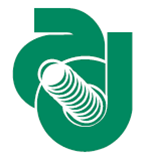Speaker
Andrew Weisenberger
(Jefferson Lab)
Description
The detection of the emissions of radioactive isotopes through radioactive decay has been used for over 80 years as a tracer method for studying natural phenomena. Recently a positron emitting radioisotope of carbon: carbon-11 has been utilized as a $^{11}$CO$_2$tracer for plant ecophysiology research. Because of its ease of incorporation into the plant via photosynthesis, the $^{11}$CO$_2$ radiotracer is a powerful tool for use in plant biology research. Positron emission tomography (PET) imaging has been used to study carbon transport in live plants using $^{11}$CO$_2$. Presently there are several groups developing and using new PET instrumentation for plant based studies. Instrumentation originally developed for small animal PET has been modified for plant research as currently undertaken at Forschungszentrum Jülich. A PET plant imaging system has also been used in plant studies by a research group at the Japan Atomic Energy Agency. Brookhaven National Laboratory researchers have used a clinical human PET scanner to track the distribution of 11C labeled metabolites in plants. Thomas Jefferson National Accelerator Facility (Jefferson Lab) with the Duke University Phytotron is also involved in PET detector development for plant imaging. I will provide a brief overview Jefferson Lab’s use of nuclear physics detector technology to develop specific detectors for radiotracer imaging in plants and review some of the latest developments of the use of $^{11}$CO$_2$ tracer in plant studies.
Author
Andrew Weisenberger
(Jefferson Lab)

